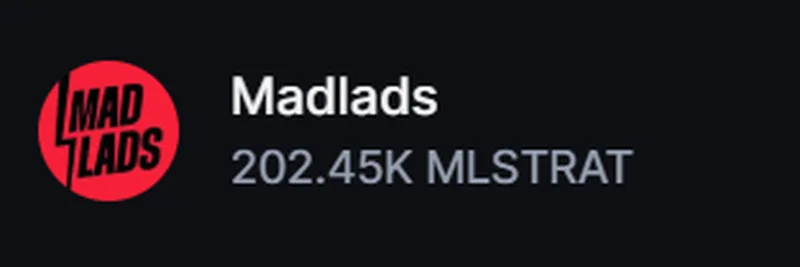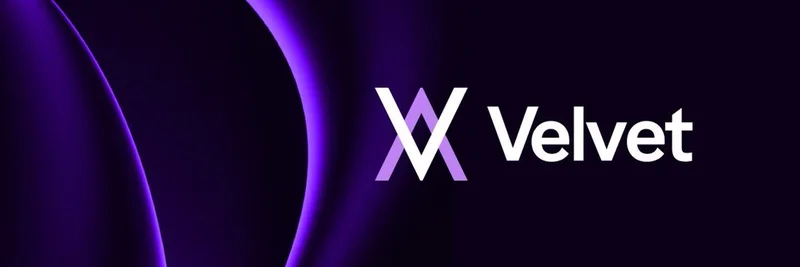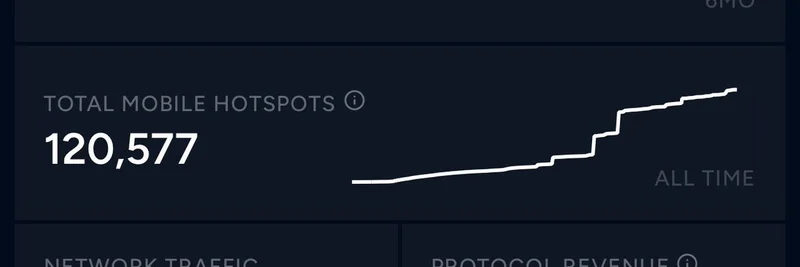In the fast-paced world of Solana NFTs and tokens, a single tweet can spark a wildfire of discussion. That's exactly what happened when Armani Ferrante, the founder and CEO of Backpack and creator of the popular MadLads NFT collection, shared his thoughts on strategy tokens. If you're not familiar, strategy tokens are essentially tokenized representations of investment strategies, often tied to NFT collections. They allow people to gain exposure to an NFT project without buying the actual NFTs, kind of like a fund that invests in them.
Ferrante's tweet was in response to a post about $MLSTRAT, the MadLads Strategy token launched via Bands.fun. Bands.fun is a platform that lets users create and invest in Solana-based token ETFs—think bundles of tokens or NFTs turned into tradable assets. In the case of $MLSTRAT, trading fees accumulate in SOL, which is then used to buy MadLads NFTs. Those NFTs get relisted at a markup (around 20%), and when they sell, the proceeds buy back and burn $MLSTRAT tokens, theoretically increasing their scarcity and value.
But Ferrante flipped the script. He suggested that the current model might have it "backwards." Instead of focusing on buying and burning the strategy token, why not buy and burn (or save) the NFTs themselves? His reasoning? The value generated flows to the token holders, not necessarily the NFT holders—and these are often different groups. "They aren’t the same people," he pointed out, asking for thoughts from the community.
This hits at a core issue in tokenomics, the design of how value flows in crypto projects. In many setups, especially with meme tokens or strategy plays, the incentives can get misaligned. NFT holders might see their floor prices pumped by buys from the strategy fund, but if the ultimate burn mechanism favors the token, the long-term benefits skew away from the original community. It's like investing in a company's stock versus owning its products—the rewards don't always overlap.
What Are Strategy Tokens Anyway?
For those new to this, strategy tokens like $MLSTRAT or the Ethereum-based $PNKSTR (for CryptoPunks) create a flywheel effect. Every trade incurs a small fee, which funds automated actions: buying assets, relisting them for profit, and using gains to reduce token supply. It's a clever way to bootstrap liquidity and engagement. Bands.fun, backed by Alliance DAO, has been rolling out these for various Solana NFT collections, including Bodoggos and Claynosaurz. And get this—$MLSTRAT acts as the "mother token," taking a cut (about 10%) from fees on new strategies, which further burns its supply.
The model has proven popular. $PNKSTR hit an all-time high market cap over $290 million on Ethereum, and $MLSTRAT has seen rapid growth, crossing $9 million in fully diluted value shortly after launch. Communities love it because it revives trading volume and floor prices for NFTs that might otherwise stagnate.
The Debate: Tokens vs. NFTs
Ferrante's comment opens up a bigger conversation. If the goal is to support the NFT ecosystem—like MadLads, which has delivered airdrops and perks to holders—shouldn't the value loop back more directly to them? Burning NFTs could reduce supply, potentially driving up rarity and prices for remaining holders. Or "saving" them might mean locking them in a DAO or community vault for long-term benefits.
Replies to the tweet were mixed but thoughtful. One user joked about whose strategy it really is, hinting at potential misalignments. Another suggested NFT burns better align with creators. It's early days, but this could influence how Bands.fun and similar platforms evolve their mechanics.
Implications for Meme Tokens and Beyond
At Meme Insider, we track how these innovations intersect with meme tokens, which often thrive on community hype and clever economics. Strategy tokens blur the lines, turning serious NFT plays into meme-like trading frenzies. If Ferrante's idea gains traction, we might see hybrid models where NFT burns become standard, benefiting die-hard collectors over short-term flippers.
For blockchain practitioners, this is a reminder to scrutinize tokenomics. Always ask: Who captures the value? In Solana's vibrant ecosystem, where projects like MadLads lead the charge, debates like this keep things innovative and fair.
What do you think—should strategy tokens pivot to burning NFTs? Head over to X to join the conversation and follow Bands.fun for updates on new launches. As always, DYOR and trade responsibly.



